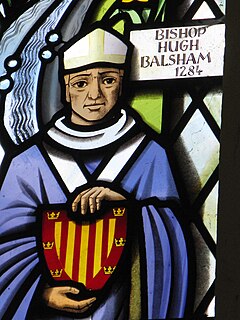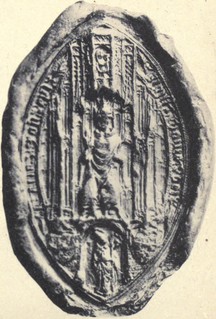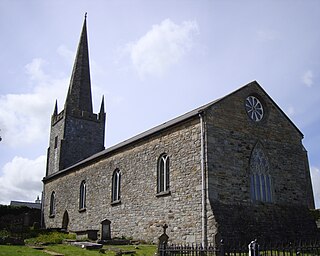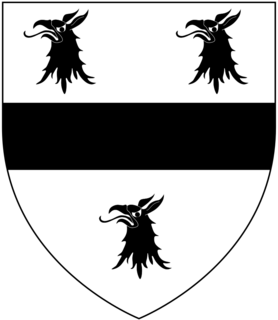Related Research Articles

Hugh de Balsham was a medieval English bishop.
William Whittlesey was a Bishop of Rochester, then Bishop of Worcester, then finally Archbishop of Canterbury. He also served as Master of Peterhouse, Cambridge.
Simon de Langham was an English clergyman who was Archbishop of Canterbury and a cardinal.
Thomas Merke was an English priest and Bishop of Carlisle from 1397 to 1400.
Marmaduke Lumley was an English priest, Bishop of Carlisle from 1429 to 1450, and Knight Commander of the Order of St. John of Jerusalem. He was a son of Ralph de Lumley, 1st Baron Lumley and Eleanor de Neville. He was elected about 5 December 1429, and consecrated on 16 April 1430. He was Bishop of Lincoln for a short time before his death in December 1450. He was educated at University of Cambridge and was appointed Precentor of Lincoln Cathedral in 1425. He also became Chancellor of the University of Cambridge in 1427 and was Master of Trinity Hall, Cambridge from 1429 to 1443. From 1446 to 1449 he served as Lord High Treasurer of England. Lumley's tenure as Lord High Treasurer occurred during the Great Bullion Famine and the Great Slump in England.
Eustace of Fauconberg was a medieval English Bishop of London from 1221 to 1228 and was also Lord High Treasurer.

Thomas de Brantingham was an English clergyman who served as Lord Treasurer to Edward III and on two occasions to Richard II, and as bishop of Exeter from 1370 until his death. De Brantingham was a member of the Brantingham family of North East England.

The Bishop of Killala is an episcopal title which takes its name after the village of Killala in County Mayo, Ireland. In the Roman Catholic Church it remains a separate title, but in the Church of Ireland it has been united with other bishoprics.

Robert de Stratford was an English bishop and was one of Edward III's principal ministers.
Ralph Ergham was the English bishop of Salisbury from 1375 to 1388, and then bishop of Bath and Wells from 1388 to 1400.
Richard Clifford was a Bishop of London who had previously been Bishop of Worcester, Bishop-elect of Bath and Wells, and Lord Privy Seal.
Nicholas Bubwith (1355-1424) was a Bishop of London, Bishop of Salisbury and Bishop of Bath and Wells as well as Lord Privy Seal and Lord High Treasurer of England.

John Hales was Bishop of Coventry and Lichfield (1459-1490). He was one of the Worthies of Devon of the biographer John Prince (d.1723).
Simon Montacute was a medieval Bishop of Worcester and Bishop of Ely.

Edmund Lacey was a medieval Bishop of Hereford and Bishop of Exeter in England.
Ælfweard was a medieval Bishop of London.
William Bottlesham was a medieval Bishop of Llandaff and Bishop of Rochester.

Richard FitzJames was a medieval Bishop of Rochester, Bishop of Chichester and Bishop of London.
John McEvilly (1818–1902) was an Irish Roman Catholic Church clergyman who served as the Archbishop of Tuam from 1881 to 1902.

James Bowstead (1801–1843) was an Anglican clergyman who served in the Church of England as the Bishop of Sodor and Man (1838–1840) and Bishop of Lichfield (1840–1843).
References
- Fryde, E. B.; Greenway, D. E.; Porter, S.; Roy, I. (1996). Handbook of British Chronology (Third revised ed.). Cambridge: Cambridge University Press. ISBN 0-521-56350-X.
- Roach, J. P. C., ed. (1959). "The colleges and halls: Peterhouse". A History of the County of Cambridge and the Isle of Ely: Volume 3: The City and University of Cambridge. Victoria County History. pp. 334–340.
| Catholic Church titles | ||
|---|---|---|
| Preceded by William Bottlesham | Bishop of Rochester 1400–1404 | Succeeded by Richard Young |
| Academic offices | ||
| Preceded by William Cavendish | Master of Peterhouse, Cambridge 1397–1400 | Succeeded by Thomas de Castro-Bernardi |
| | This article about an English bishop or archbishop is a stub. You can help Wikipedia by expanding it. |